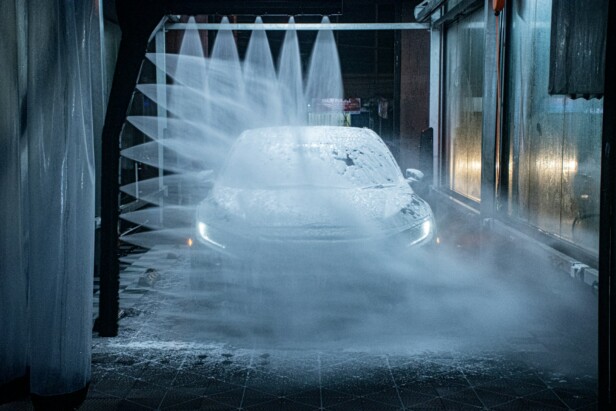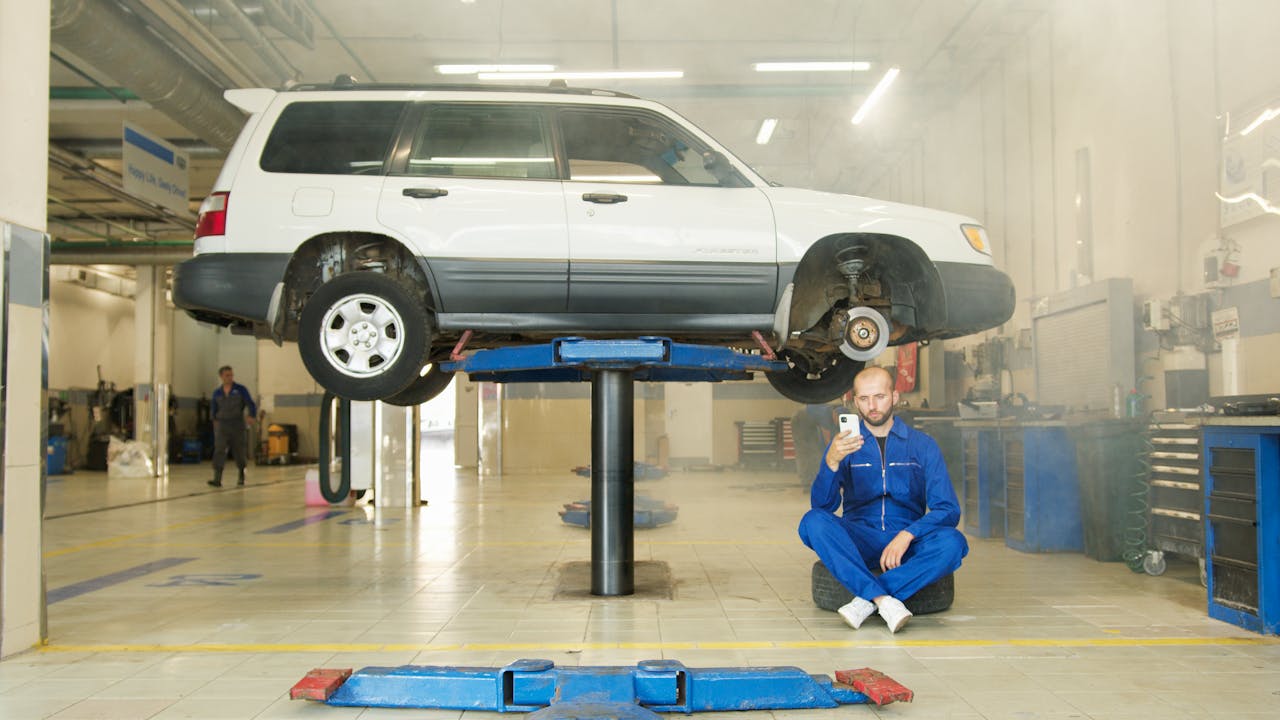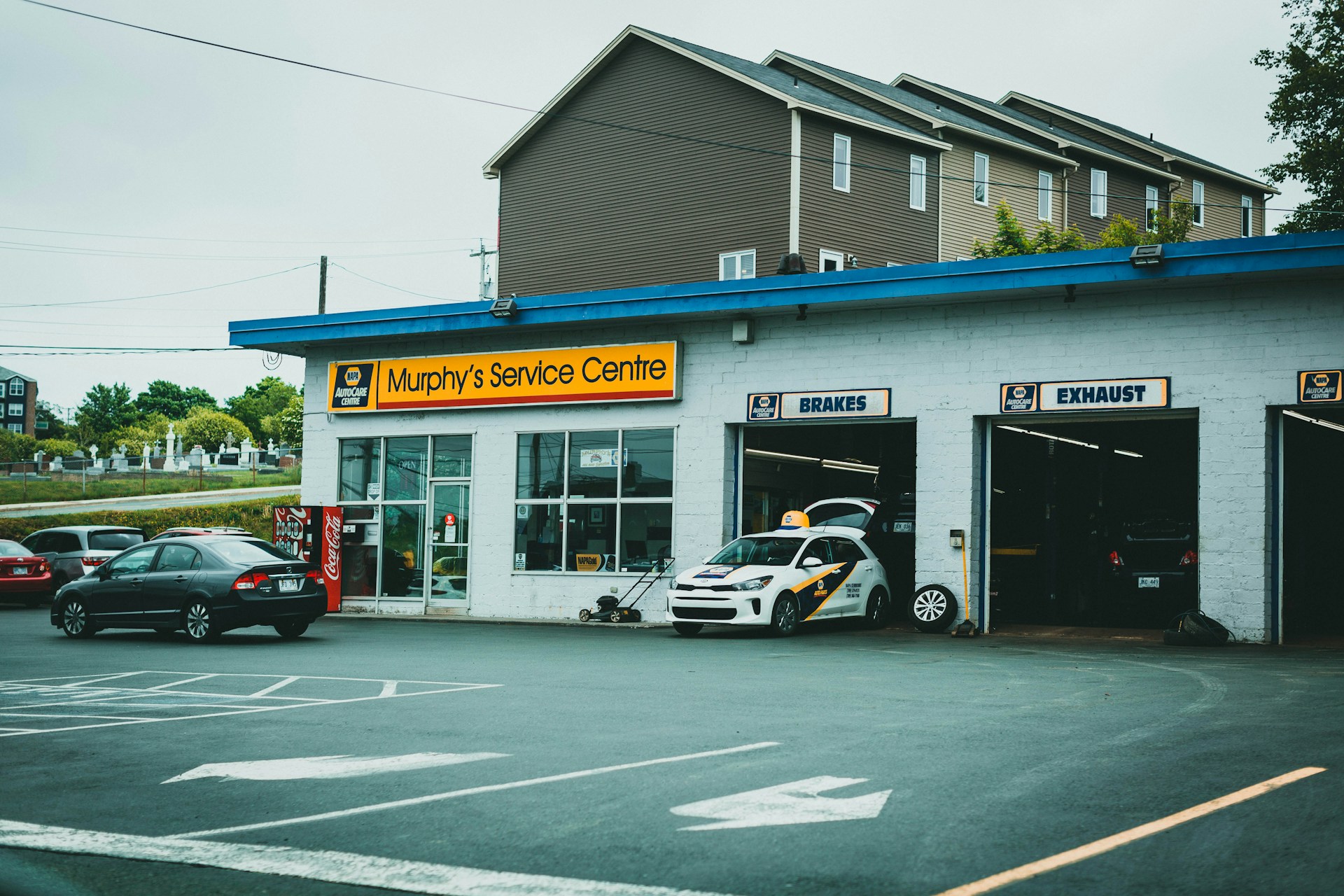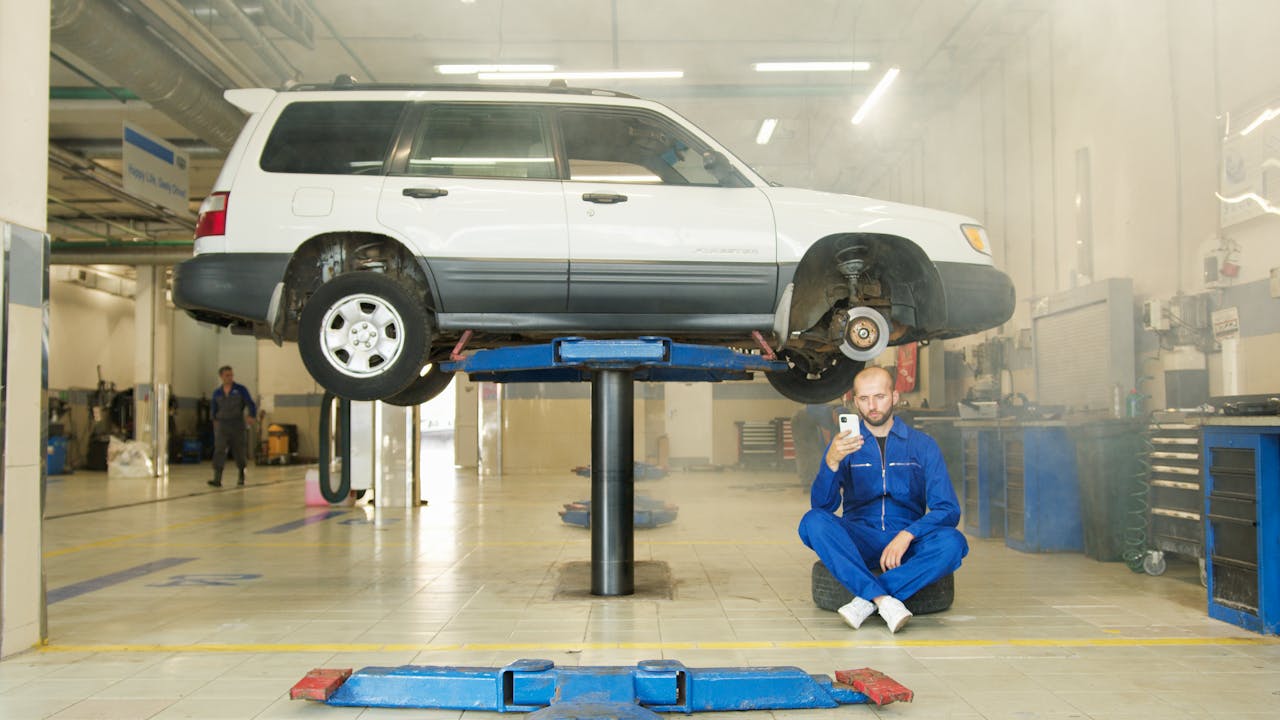One undersized bay can cost you thousands in lost revenue and compliance headaches. Self-serve car wash bay dimensions in Fort Worth directly impact vehicle accommodation, traffic flow patterns, and regulatory compliance from day one.
We build car wash facilities knowing that minimum self-serve bays measure 25 feet long by 16 feet wide with 10 feet 6 inches clearance, but recommended designs favor 30-foot bay length, 16 to 18-foot widths, and 12-foot height clearance for operational flexibility and potential automatic bay conversion. Fort Worth’s zoning code references a 200-foot distance requirement to residential properties for certain car wash allowances, while Texas environmental regulations mandate backflow prevention systems, grit trap installation, and proper wastewater discharge protocols.
What Are The Optimal Self-Serve Bay Length, Width, And Height Clearances?

Minimum bay dimensions represent the bare threshold for functionality, while recommended specifications support smoother operations and future flexibility. We build to standards that accommodate current needs while preparing for potential expansion or conversion.
Self-serve bay minimums start at 25 feet length by 16 feet width with 10 feet 6 inches clearance. These dimensions handle standard passenger vehicles but offer little margin for error or customer comfort. The restricted space can create challenges during busy periods when drivers need extra maneuvering room.
Our recommended bay dimensions provide better operational performance. We typically design 30-foot lengths with 16 to 18-foot widths and 12-foot clearance heights. The additional length improves customer flow patterns and reduces wait times during peak usage periods.
Length Considerations For Customer Flow
Bay length directly impacts how efficiently customers can position their vehicles and complete wash cycles. Industry guidance frequently references 28 feet length by 16 feet width as common internal measurements for standard operations. These dimensions work well for car-focused facilities in urban markets.
The 30-foot length specification offers operational advantages we consistently observe in our projects. Extended bays allow customers more space to maneuver without feeling rushed or cramped. This translates to better customer satisfaction and reduced incidents involving contact with bay walls or equipment.
Longer bays also facilitate future automatic conversion when market conditions or business strategy shifts. Automatic systems with integrated dryer installations typically require 36 feet of length to accommodate equipment placement and vehicle movement patterns.
Width Specifications For Vehicle Accommodation
Bay width determines which vehicles can comfortably use the facility and affects overall safety margins. Standard 16-foot widths accommodate most passenger cars, crossovers, and smaller SUVs without difficulty. However, markets with significant truck traffic benefit from 18-foot widths.
Truck-focused bay designs typically utilize 17 to 18-foot widths combined with 28-foot lengths. The additional width provides necessary clearance for dual-wheel configurations, extended mirrors, and wider commercial vehicle profiles. This prevents damage to both vehicles and bay equipment while improving user experience.
We design wider bays when local vehicle demographics indicate substantial pickup truck, commercial van, or recreational vehicle usage. The investment in additional width pays dividends through reduced insurance claims and expanded customer base accessibility.
Height Clearance For Modern Vehicle Profiles
Clearance height requirements reflect today’s diverse vehicle mix, including lifted trucks, high-roof vans, and recreational vehicles. Minimum clearance at 10 feet 6 inches covers most standard vehicles but leaves minimal safety margin for variations in vehicle height or loading.
Our standard recommendation calls for 12-foot clearance throughout the bay. This specification accommodates the vast majority of non-commercial vehicles while providing adequate space for overhead equipment installation and maintenance access. Higher clearances also create a more professional appearance that customers associate with quality facilities.
The additional clearance proves valuable for truck bay applications where commercial vehicles or modified recreational vehicles require extra vertical space. Planning for 12-foot minimum clearance prevents costly modifications later if customer vehicle profiles evolve.
How Large Should The Equipment Room Be, And What Power Is Needed?
Equipment room sizing starts with a minimum 10′ x 20′ footprint. We size these spaces knowing that cramped quarters lead to maintenance headaches and safety issues down the line.
Preferred pump room dimensions match your bay length for operational efficiency. A 25-foot bay works well with a 25′ x 10′ equipment room, while 30-foot bays pair with 30′ x 10′ to 12′ spaces. Typical configurations we see run 10′ to 15′ wide by 28′ long, giving technicians room to work around high-pressure pumps, chemical dispensing systems, and water heaters.
The extra width beyond 10 feet provides maintenance access around equipment. We build in storage space for spare pumps, filters, and chemical containers. This prevents the common problem of equipment rooms turning into cluttered spaces where service work becomes difficult.
Electrical Requirements For Car Wash Equipment Rooms
Equipment rooms need 220V three-phase power sized for simultaneous bay operation. We calculate electrical capacity based on peak demand when all bays run simultaneously during busy periods. High-pressure pumps, water heaters, and chemical injection systems draw significant current.
Emergency shutoff switches must be readily accessible and clearly marked. These shutoffs protect workers and equipment during maintenance or emergencies. We position them near the main entrance to the equipment room for quick access.
Proper grounding becomes critical in wet environments. All metallic equipment, conduit, and enclosures require bonding to prevent electrical hazards. We follow wet-environment electrical practices throughout the equipment room design.
Individual Bay Power And Safety Requirements
Each self-serve bay needs 110V single-phase power for lighting and payment systems. LED bay lighting draws less current than traditional fixtures while providing better illumination for customers. Payment systems, including coin acceptors and credit card readers, operate on standard 110V circuits.
GFCI protection is mandatory for all 110V outlets in car wash environments. The combination of water and electricity creates serious shock hazards without proper protection. GFCI devices must be readily accessible for testing and maintenance.
Weather-resistant installations protect electrical components from moisture and chemical exposure. We specify NEMA-rated enclosures and fittings designed for wash bay environments. Standard electrical boxes fail quickly when exposed to high-pressure water and cleaning chemicals.
Planning electrical capacity with a margin for future equipment prevents costly upgrades later. Additional circuits for automated equipment, security systems, or upgraded lighting can be accommodated when we size initial electrical service appropriately. This forward-thinking approach saves money compared to electrical system retrofits after construction.
How Should Lot Sizing And Site Layout Support These Bays In Fort Worth?
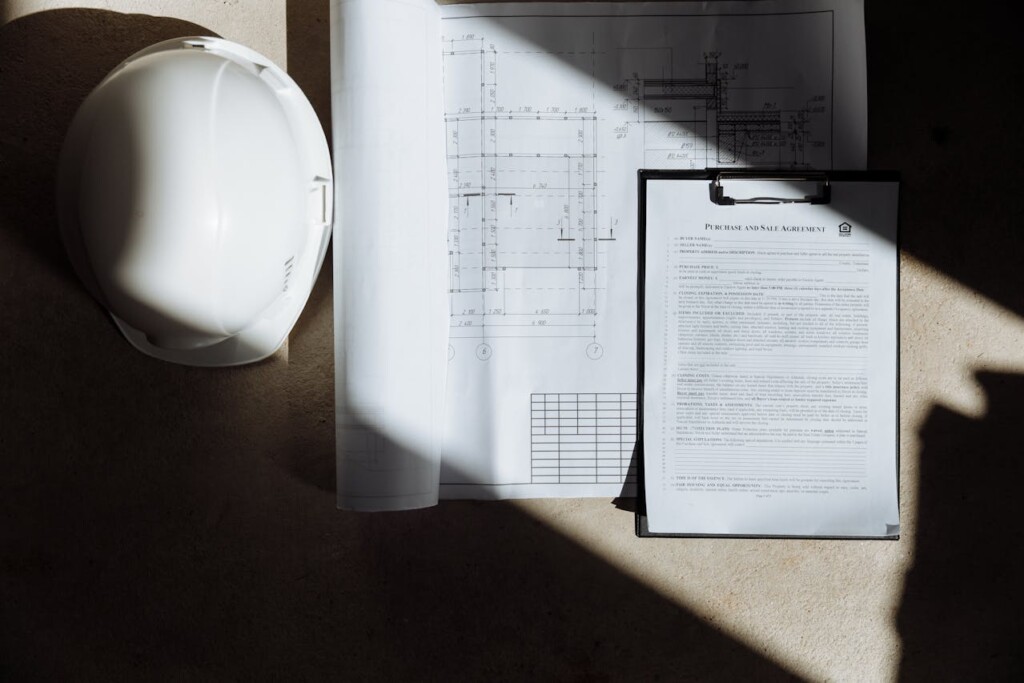
Proper lot sizing forms the foundation of efficient self-serve car wash operations in Fort Worth. We size lots based on bay count, customer flow patterns, and the space needed for safe vehicle maneuvering.
Lot Dimensions For Four-Bay Operations
A typical four-bay self-serve facility requires 100 to 120 feet of depth with a minimum width of 75 feet. We prefer 100-foot widths for four-bay configurations to accommodate proper site circulation and customer comfort. This translates to roughly 7,500 to 12,000 square feet of usable space.
The depth measurement accounts for the bay structure, equipment room, and necessary stacking areas. Width requirements factor in bay spacing, drive aisles, and vacuum placement while maintaining safe distances from property lines.
Vehicle Stacking And Traffic Flow
Effective site planning includes stacking space for one to two cars behind each active bay. This prevents customers from blocking entry paths or creating safety hazards on adjacent streets. We calculate stacking zones at approximately 20 feet per vehicle, including safe following distances.
Drive-through layouts provide superior traffic flow where lot configuration allows. Customers enter from one side, use the bay, and exit through the opposite end without backing maneuvers. Drive-in/back-out designs work for tighter lots but require wider bay spacing to accommodate turning movements.
Strategic Vacuum Placement
Vacuum islands require careful positioning to support operations without impeding traffic flow. The industry standard calls for approximately 1.5 vacuum units per wash bay, giving customers adequate access during peak periods. We position vacuum areas away from main entry and exit routes to prevent bottlenecks.
Each vacuum station needs roughly 75 square feet including the unit footprint and customer maneuvering space. Islands work best when positioned parallel to wash bays rather than perpendicular to traffic lanes.
Drying And Finishing Areas
Designated drying areas outside main traffic patterns improve customer satisfaction and site safety. These zones typically require 200 to 300 square feet and should connect logically to vacuum locations. We avoid placing finishing areas where they interfere with new arrivals or departing customers.
Fort Worth’s climate considerations influence layout decisions. Southern exposure helps reduce ice formation on entrance and exit aprons during occasional winter weather. This positioning takes advantage of natural sun angles to minimize slip hazards and improve year-round accessibility.
What Texas And Fort Worth Rules Impact Bay Design And Operation?
Fort Worth zoning requirements establish a 200-foot distance to residential uses as a threshold that affects allowances for certain car wash types. We verify these specifics during site selection since this buffer affects construction feasibility and operational permissions. Local zoning review ensures compliance with municipal requirements before design commitment.
Texas Commission on Environmental Quality regulations create mandatory requirements for car wash construction. We install a reduced-pressure-principle backflow prevention assembly to protect the incoming water supply from contamination hazards. Annual testing by a licensed backflow-prevention-assembly tester keeps the system compliant, and we maintain test and maintenance report forms for records.
Grit trap installation filters sediment and trash from dirty wash water before it enters the sewer system. We notify the local wastewater treatment plant that car wash water will discharge into their sewer collection system and keep copies of authorization letters and responses. Discharge to septic systems remains prohibited under TCEQ rules.
Bay coverage prevents stormwater from entering the drain system, a requirement that affects structural design and site drainage planning. We incorporate covered bay designs to separate car wash wastewater from stormwater runoff. This separation requirement influences roof systems and drainage coordination during construction.
Grit Trap Waste Management Requirements
Managing grit-trap waste follows specific TCEQ protocols. We handle the solid, liquid, or semisolid material that accumulates through three approved methods: on-site drying using evaporation beds, drying at another owned site within 50 miles, or disposal by registered sludge transporters.
On-site drying beds require design and maintenance that prevents releases or nuisances without specific TCEQ construction specifications. When hauling wet waste to a drying site at another owned location, registration as a sludge transporter becomes mandatory using TCEQ Form 00481 and Core Data Form 10400.
Registered transporters must pump and transport wet grit-trap waste when not dried on-site. These transporters provide completed manifests or trip tickets that document proper disposal, and we keep these waste manifests for at least three years. Grit-trap waste qualifies as special waste due to potential contamination with benzene, lead, oils, and automotive fluids.
Water Conservation And Best Practices
Best management practices reduce environmental impact and compliance violations. We install low-flow nozzles, positive shut-off valves, and water recycling systems where feasible. Regular maintenance prevents clogged drains that cause overflows and runoff problems.
Equipment inspections for tanks, containers, and nozzles identify leaks or clogs requiring immediate repair. Stormwater control through bay coverage and proper drainage design keeps clean rainwater separate from contaminated wash water. These practices support reuse and recycling efforts while maintaining regulatory compliance.
Conclusion And Next Steps
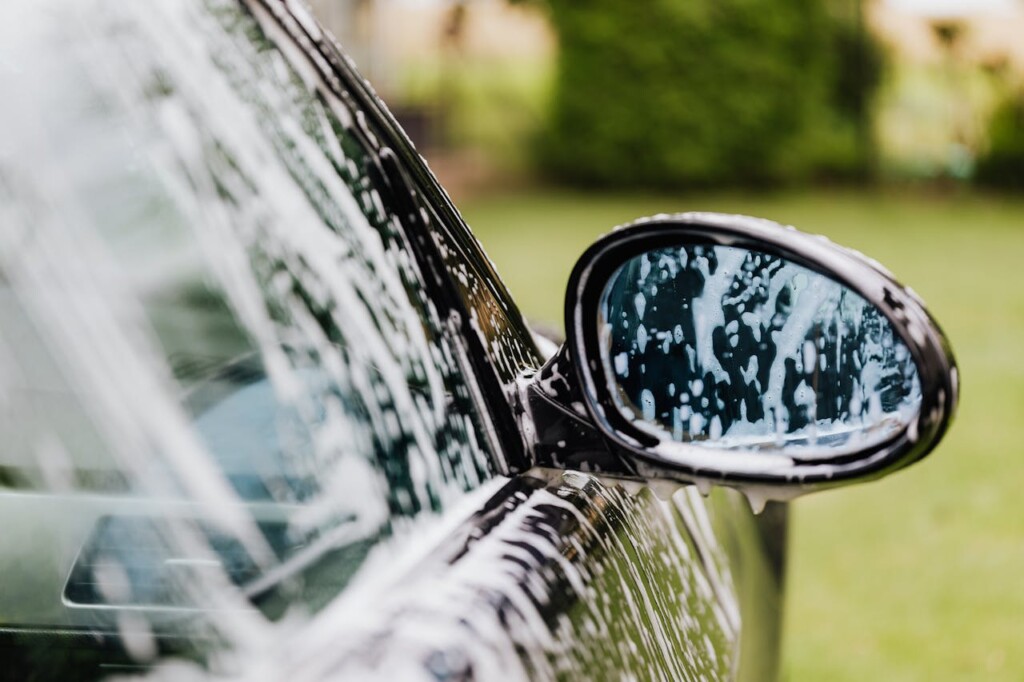
Self-serve car wash bay dimensions in Fort Worth require careful planning that balances functionality, code compliance, and future flexibility. We approach each project with the understanding that proper sizing decisions made early prevent costly modifications down the road.
Start with the 25-foot by 16-foot minimum configuration as your baseline, then target 30-foot length, 16 to 18-foot width, and 12-foot clearance for optimal vehicle accommodation. These dimensions support everything from compact cars to full-size pickup trucks while maintaining the space needed for future automatic conversion. Equipment room planning follows the same principle: begin with the 10-foot by 20-foot minimum and size electrical systems at 220V three-phase for central plant operations and 110V single-phase with GFCI protection for individual bay functions.
Fort Worth zoning requirements and TCEQ environmental rules form the regulatory foundation for every car wash project we build. The 200-foot residential distance threshold can significantly impact site selection and design flexibility, making early verification essential. Texas environmental compliance centers on three critical systems: reduced-pressure-principle backflow prevention assemblies, properly sized grit traps, and approved wastewater discharge methods. Each component requires specific documentation and maintenance schedules that affect long-term operations.
Define your target vehicle mix early in the planning process, as this decision drives bay width selection and influences site plan development. Size your facility for peak demand periods rather than average usage to avoid revenue limitations during high-traffic times. Reserve adequate space for vehicle stacking and vacuum placement, following the general guideline of 1.5 vacuum units per bay. These considerations directly impact customer flow patterns and overall site functionality.
Ready to move forward with your self-serve car wash project? Contact EB3 Construction to coordinate plans with local code reviewers and finalize your design specifications.

